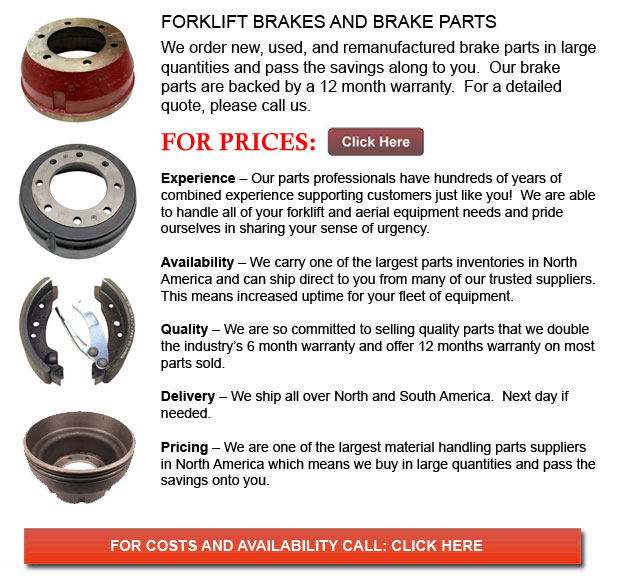
Forklift Brakes - A brake in which the friction is supplied by a set of brake shoes or brake pads which press against a rotating drum shaped unit called a brake drum. There are some particular differences among brake drum kinds. A "brake drum" is usually the explanation given when shoes press on the interior outside of the drum. A "clasp brake" is the term utilized in order to describe when shoes press against the outside of the drum. Another type of brake, called a "band brake" makes use of a flexible belt or band to wrap round the exterior of the drum. If the drum is pinched in between two shoes, it can be referred to as a "pinch brake drum." Like a conventional disc brake, these kinds of brakes are somewhat uncommon.
Before the year 1995, early brake drums required constant adjustment regularly in order to compensate for shoe and drum wear. "Low pedal" or long brake pedal travel is the hazardous end result if modifications are not executed sufficiently. The vehicle can become dangerous and the brakes could become useless if low pedal is mixed along with brake fade.
There are a variety of Self Adjusting Brake Systems obtainable, and they can be categorized within two main kinds, RAI and RAD. RAI systems have built in equipments which prevent the systems to be able to recover when the brake is overheating. The most popular RAI makers are AP, Bendix, Lucas, and Bosch. The most famous RAD systems include Ford recovery systems, Volkswagen, VAG, AP and Bendix.
The self adjusting brake will normally just engage whenever the vehicle is reversing into a stop. This method of stopping is satisfactory for use where all wheels use brake drums. Disc brakes are utilized on the front wheels of vehicles today. By operating only in reverse it is less likely that the brakes will be applied while hot and the brake drums are expanded. If tweaked while hot, "dragging brakes" could happen, which increases fuel intake and accelerates wear. A ratchet mechanism that becomes engaged as the hand brake is set is another way the self adjusting brakes can function. This means is just suitable in applications where rear brake drums are used. Whenever the parking or emergency brake actuator lever goes beyond a specific amount of travel, the ratchet advances an adjuster screw and the brake shoes move in the direction of the drum.
Placed at the base of the drum sits the manual adjustment knob. It can be adjusted using the hole on the opposite side of the wheel. You will have to go under the vehicle together with a flathead screwdriver. It is really vital to be able to adjust each wheel equally and to be able to move the click wheel properly as an unequal adjustment can pull the vehicle one side during heavy braking. The most effective way to guarantee this tedious task is done safely is to either lift every wheel off the ground and hand spin it while measuring how much force it takes and feeling if the shoes are dragging, or give each one the same amount of manual clicks and then perform a road test.
![]() Click to Download the pdf
Click to Download the pdf
Forklift Parts
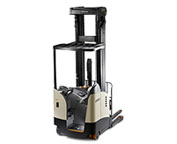
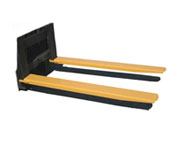
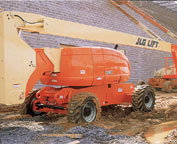
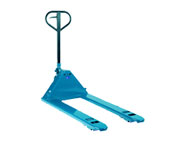
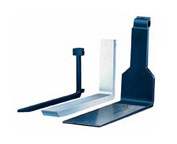
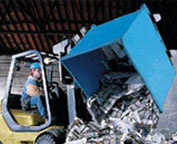
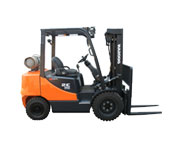

Lift Parts Express
TOLL FREE: 1-888-695-7994
LOCAL: 805-285-7052
1197 E Los Angeles Ave C-331
Simi Valley, California
forkliftpartssimivalley.com
Email Us
About Us


